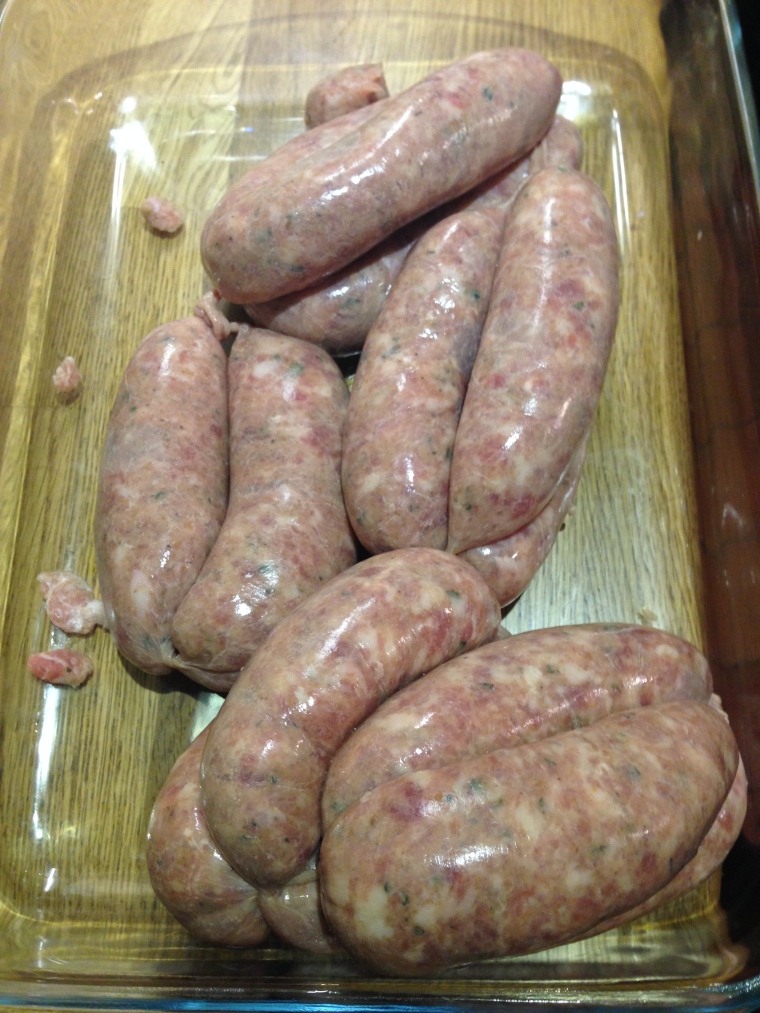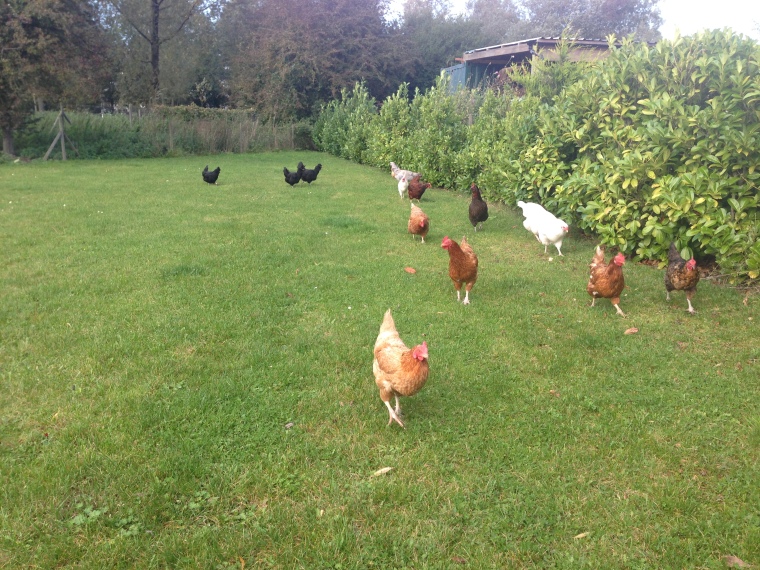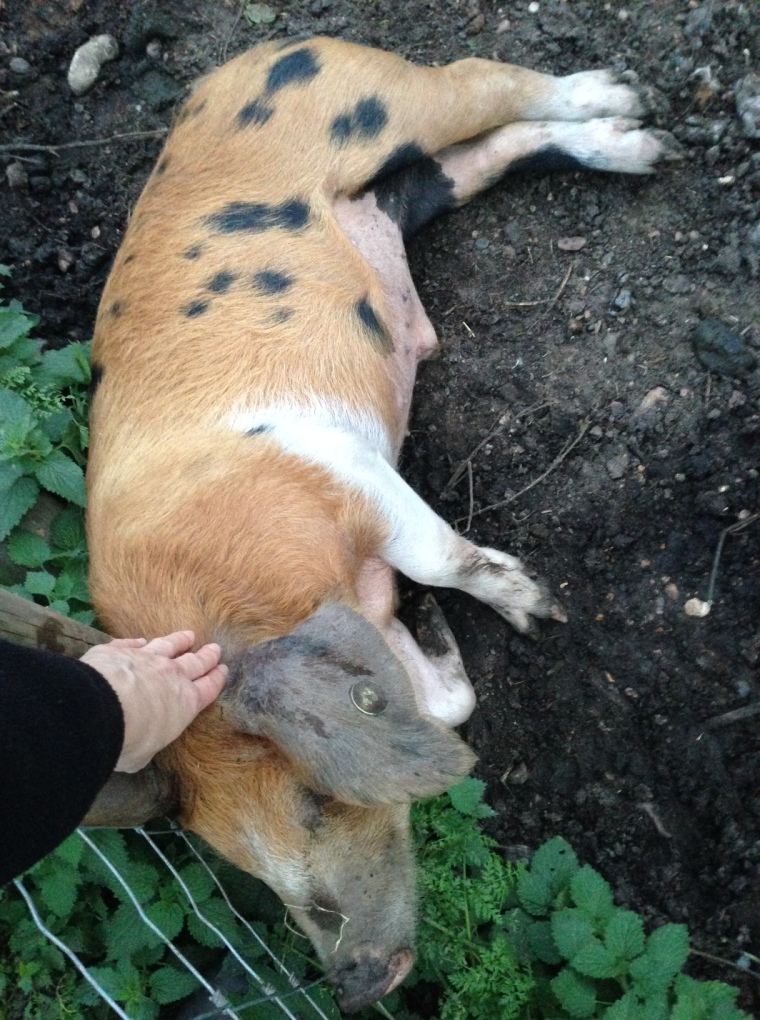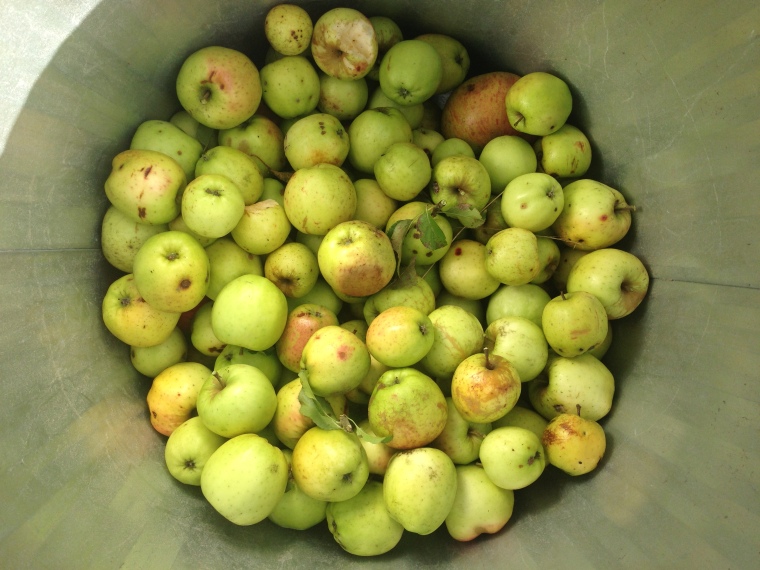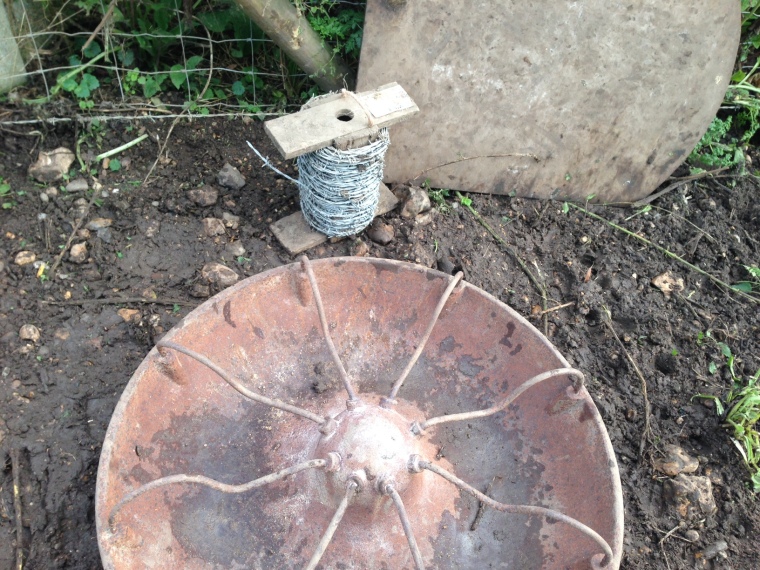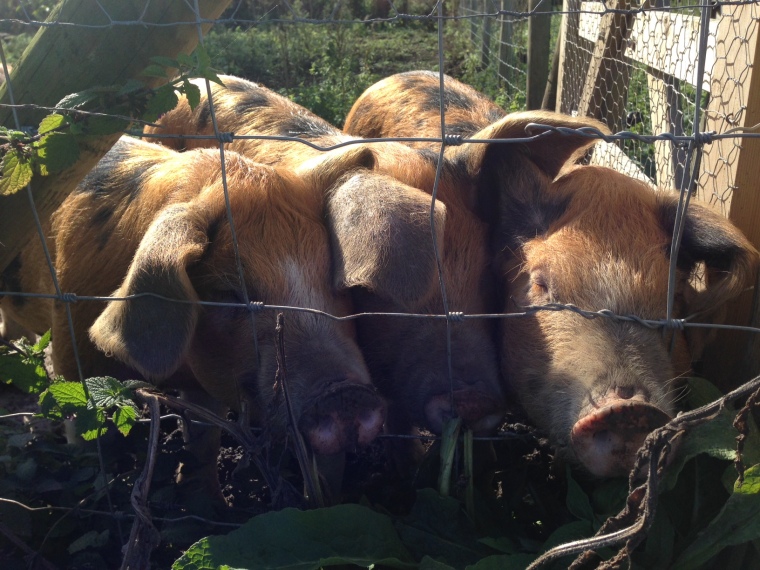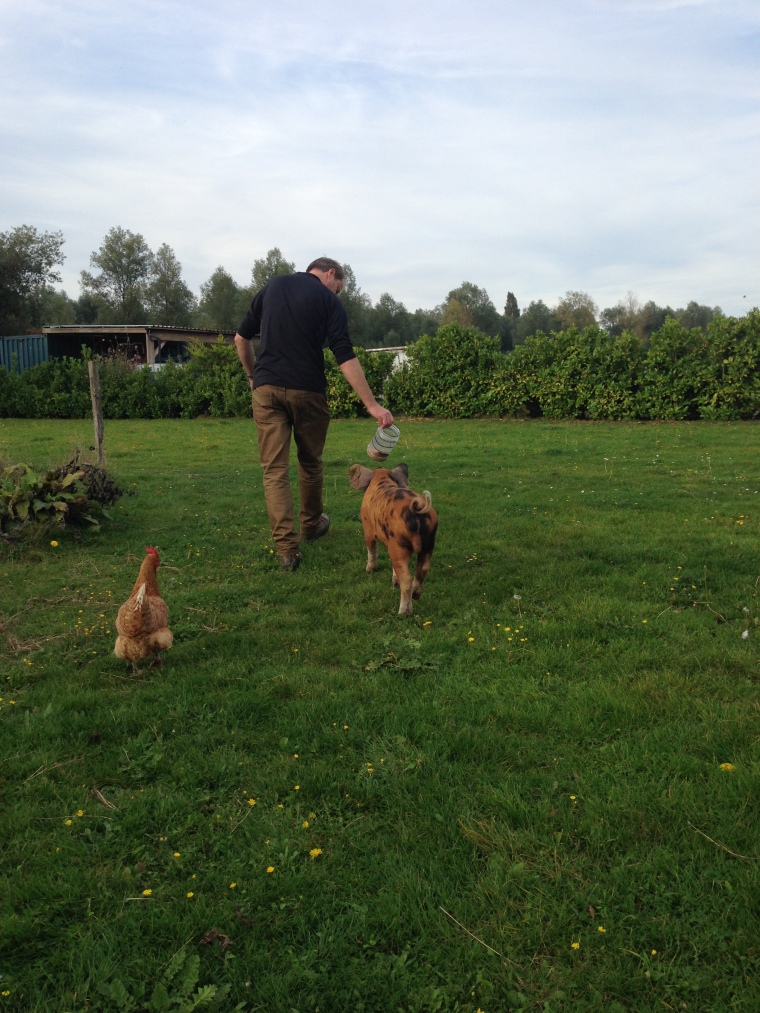
On my way to the chicken run at the end of the garden on Saturday at around 8am, the muffled notes of a favourite tune reached me at the gate. Jeffrey, our beloved lavender Araucana cockerel was crowing for the first time. It was bright and light – as opposed to the early weekday British Summer Time mornings of late when we were letting out the flock in the dark and shortly after leaving for work – and Big Jeff was heralding a beautiful day. Naturally, I lavished him with praise and immediately went to tell James the good news. The following day, my mother came for lunch and we pottered down to see the chickens and pigs afterwards. I wanted Mum to hear Jeffrey’s clarion call for herself and after she had gamely tried to encourage him with some vocal renditions of cockadoodledo, I confess I resorted to YouTube and played him a video, which contained this delightful farmyard noise in the hope that hearing a rival male would inspire Jeff to declare his territory (as that is what crowing is meant to be about). Sure enough, he did the decent thing and produced a very handsome sound:
Later that day, another micro-holding milestone was achieved. This time, in the kitchen. James and I still have a wonderful quantity of pork shoulder and belly meat from our Gloucestershire Old Spots to use – so we defrosted one of our packs that the butcher made up especially for sausage-making and set to work. Having invested in a mincer and sausage-stuffing machine, we were ready for action and tried two different recipes. Not wanting to become too experimental, we opted for simple flavours: paprika, salt and black pepper in one batch and a mix of sage, thyme and seasoning in the other. While I prepared the breadcrumbs and spices, and picked, washed and chopped herbs, James got to grips with the mincer after a few hiccups, including fitting a vital part that we had both forgotten about until the machine seemed to purée the meat (rather off-putting!). After a little trial and error, James had produced some fine-looking bangers which we immediately popped into the oven for testing. The rest were then distributed to local friends and family for sampling. Of course, there’s plenty of room for improvement – we’ll have great fun experimenting and getting the texture and seasoning just right. If there are any experienced sausage-makers out there who could offer some advice on one aspect in particular, I’d be very grateful. The mix didn’t seem to hold together very well once you sliced into the cooked bangers. Imagine this is down to a simple novice error and it would be great to know what it is! Much appreciated. In the meantime, happy weekends all.
